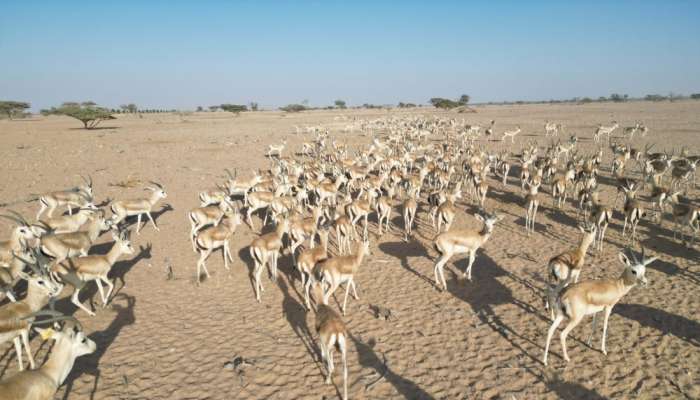Muscat: The Arabian Oryx Reserve in Al Wusta Governorate received about 1,200 visitors in 2023.
The Sultanate of Oman has taken steps to preserve environmental diversity, including the reintroduction project of Arabian Oryx in the Al Wusta Governorate, which is an important symbol in its unique natural history.
The preservation steps began in the seventies and included multiple stages of reproduction and healthcare until they were released into the wild.
Sultan bin Muhammad Al Balushi, Director of the Arabian Oryx Department, said: “The Arabian Oryx Reserve is the first natural reserve in the Sultanate of Oman. It is surrounded by diverse wildlife and its area is about 2,824 square kilometers, making it one of the largest natural reserves in the Sultanate of Oman.”
Al Balushi added that the number of Arabian Oryx in the reserve is approximately 900. It also includes 1,140 sand gazelle, 140 Arabian Gazelle, Nubian ibex, sand fox, striped hyena, wild rabbits, and honey badger, in addition to ostrich and llama.
Saeed bin Ali Habsi, an ecosystem specialist at the Arabian Oryx Reserve, said: “The Arabian Oryx Reserve is an engine for economic development and supports ecotourism, promotes the culture of conservation and preservation of natural habitats, and a means of education and field research to enrich knowledge.”
The environmental systems specialist at the Arabian Oryx Reserve added that the implementation of a project to plant 80,000 wild trees such as Samar, Sidr and Al-Faf began two months ago. The reserve’s gate will be developed and illuminated, and the construction of facilities for the reserve’s employees will be completed soon.
He pointed out that the reserve has documented steps of natural migration of oryx by installing tracking collars on them to know the coordinates of their presence and the extent of distribution throughout the region. He said that the months of January and February of each year are the breeding season for the Arabian Oryx in the reserve.
Also, 53 Reem gazelles were released last November in the reserve with the aim of enriching it with Omani wildlife and improving the surrounding ecosystem.
The environment specialist said that there is a mini exhibition in the reserve that contains some pictures and brochures that explain the story of the establishment of the reserve and its development. There is also a work team consisting of environmental specialists, veterinarians, and reserve workers, to supervise the nutrition, health conditions, and necessary therapeutic interventions for the various animal herds present in the protected zone.
The environmental team monitors and protects herds of Arabian oryx, Arabian gazelle, sand gazelle, and other species.
